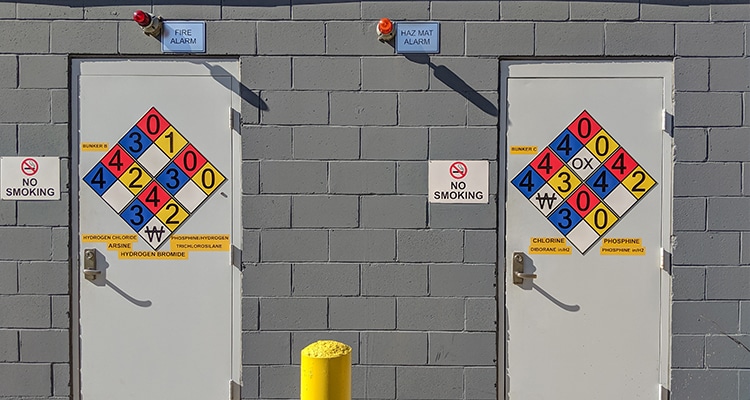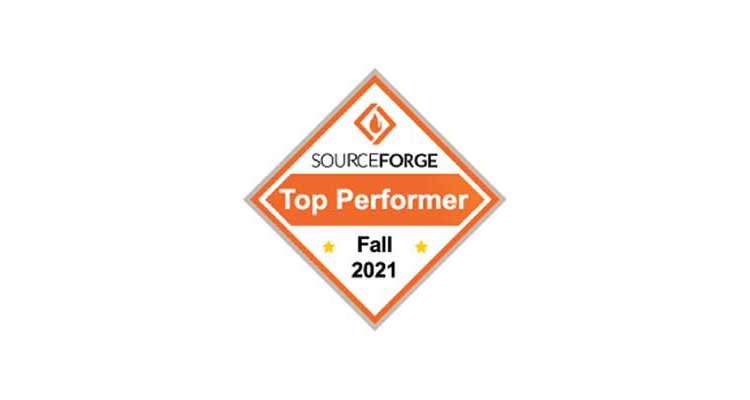According to OSHA’s 2020 report, for the third year in a row, Hazard Communication is the most cited violation in general industry. This may be surprising to hazardous materials professionals because managing the lifecycle of chemicals onsite can be easily managed with the appropriate steps. In fact, the six steps to a successful HazCom program are no mystery. OSHA publishes a Fact Sheet on Effective Hazard Communication Program that can be reviewed here. Meeting the requirements on the fact sheet will keep a company in compliance. Using an EH&S management system and software tools, however, can take your site beyond compliance and into developing and maintaining a high-quality hazardous materials management workflow.
Below are not only the six steps to a successful HazCom Program, but also some insights into how an effective software tool transition a compliant program into an advanced management system.
Step 1: Assign Management of the Program
The Hazard Communication Program has many components and OSHA suggests that the management of the program be assigned to one person. That one person doesn’t have to write and implement the entire program, but be responsible to delegate and identify staff to carry out specific activities. When this person has an application that gives access to real-time chemical inventory data, that application becomes the foundation for chemical management on site.
Step 2: Implement a Written HazCom Program
It’s likely that you have processes in place for ordering hazardous materials and obtaining a Safety Data Sheet (SDS). Simply writing down or drawing out a flow chart of the process of how hazardous materials are managed onsite can be the basis of the written HazCom program. The written program must contain information on labeling, SDS, and employee training. Most sites are already receiving chemicals that is labeled from the manufacturer, obtain SDS from the manufacturer and provide some sort of chemical safety training for employees. Begin by writing down the process and make sure it includes the elements listed above, as this is the beginning of the written HazCom program.
An important element of the written HazCom program requires employers to maintain a list of hazardous chemicals known to be present in the workplace. Keeping an up-to-date list of all the hazardous materials in a facility can be difficult, especially when chemicals are frequently ordered, delivered, used and disposed of in a short period of time. Built-in tools of a chemical management software system allows the user to manage the inventory of chemicals onsite using a database that can produce reports listing chemicals currently on-site as well as ones that may have been on site in the past. Software systems can also identify when new chemicals are added to the workplace, triggering a training request and fulfilling the OSHA HazCom training requirement.
Step 3: Label Containers
Manufacturers of hazardous materials are required to provide labels that identify the product, the product hazards and the name of the responsible party. This is good news for employers because this label is sufficient for the workplace and no additional labeling is required while the material is in its original container. However, additional labeling is required if the product is transferred to another container (known as secondary container labeling) or when large containers are split into smaller containers for use at different locations. When this happens, the employer becomes responsible to add the necessary information to the secondary container with the minimum amount of information required which includes product identifier and information concerning the hazards. Sites using software to manage their chemical inventory are able to print GHS compliant labels that not only meet these requirements but can be appropriately sized to the container.
Step 4: Safety Data Sheets For All Hazardous Chemicals
As stated in step 2 above, one of the elements of a written HazCom program is an inventory of hazardous materials in the workplace. It becomes critical for that inventory to be accurate to reduce the burden of maintaining SDSs for each chemical in the workplace. Not only does it have to be readily and easily available, it needs to be the most recent SDS version. Manufacturers were required to update their SDSs to meet the 2012 Hazcom standard revision to GHS. An MSDS (Material Safety Data Sheet) is no longer compliant, and a more recent SDS (Safety Data Sheet) copy must be available if that product is in the workplace.
Keeping SDSs can be a daunting task for any company, whether in a binder or kept electronically. The task becomes overwhelming if the chemical inventory is inaccurate or out-of-date. The same chemical management software system that is used to manage the chemical inventory and print labels can now be connected to a library of SDS for all of the chemical inventory on site. The software system ensures that SDS are readily accessible to employees by searching, filtering and/or printing, on a cloud (web)-based application or using a mobile device.
Step 5: Keep Up with Training
OSHA requires employees to be trained on hazardous chemicals before their initial assignment and when new hazards are introduced. Keeping track of chemicals on a spreadsheet does not provide the necessary tools to identify when new hazards enter the workplace. Managing the chemical inventory with a software application allows for complete visibility into what chemical is being used and authorization of new chemicals in specific work areas allowing the employer to customize training for those workers.
Step 6: Refine and Re-assess the Program
As with any process, the program must be reviewed and sometimes revised periodically to make sure it is addressing any changed conditions in the workplace. Creating and maintaining a written hazardous Communication Program supported by a robust software program that directly connects inventory to SDSs is the only way to ensure the program meeting its objectives. Many times the calendar reminder to re-assess the program comes and goes as an overwhelmed EH&S professional dreads the day they must reconcile actual inventory on hand to available SDSs. Environmental Management Systems reduce this burden to few clicks to identify improvements that can made.
Managing the life cycle of chemicals on site can be done by using these six steps to a create a successful hazcom program that meets OSHA requirements. For more information on how to create and maintain an effective hazard communication program using technology and software as the foundation, contact us at sales@chemicalsafety.com or submit a demo request.
Sarah Henderson, CHMM, SEA



